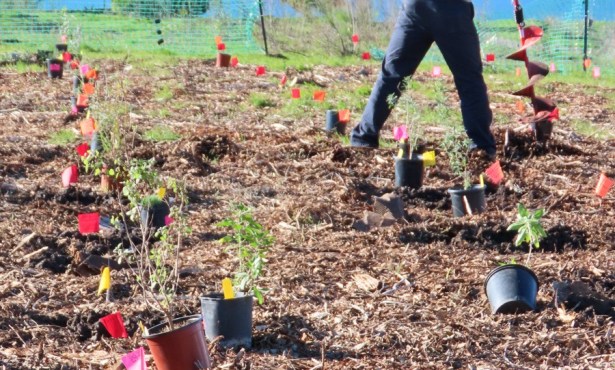Broken Dreams, Budding Promises
Naples Development Dreams Evaporating; Global Preservation Group Awed by Stretch of Gaviota Coast
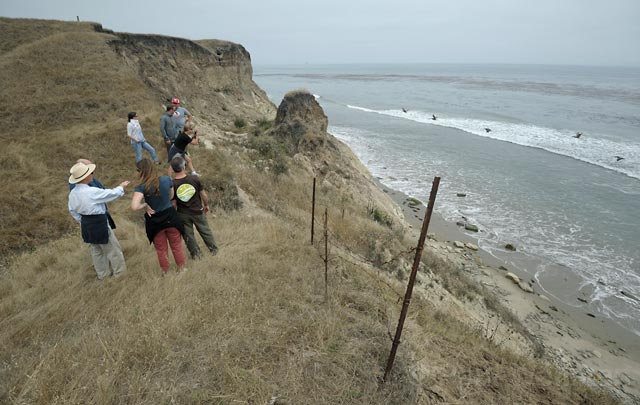
Remember when the eventual McMansionization of Naples seemed like a foregone conclusion? Remember when pool houses, equestrian centers, and fortified luxury estates were all but guaranteed to be the future, albeit a publicly unpopular one, for that sublime and ever-endangered slice of mostly untouched coastal ranch land at the easternmost gate of Gaviota? Well, despite a controversial vote of approval from the Santa Barbara County supervisors nearly three years ago for his Naples-conquering dreams, Matt Osgood, the often-vilified Orange County-based developer who has spent the better part of the past 12 years on a plan to build out the historic property, now reckons his vision is all but dead.
Essentially relegated to the sidelines by a bank foreclosure last spring and kept there ever since by a growing sea of circumstances that are decidedly pro-conservation, Osgood summed up the situation this week with a frank assessment. “There is a very, very low probability that I, or anybody, for that matter, could actually execute on those approvals we got,” explained Osgood, before adding, “I would say, ‘advantage preservationists,’ and in a big way. It is prime time right now for [them] to figure out a play — there probably hasn’t been a better time [to try and protect Naples] in the last 50 years.”
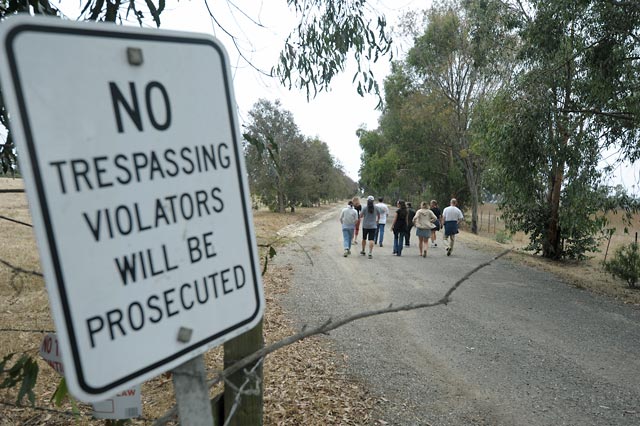
Interestingly enough, Osgood’s temperature read on these current times, unbeknown to him, came just days after an informal visit to the Naples property by the executive board of Surfrider Foundation — one of the biggest and baddest ocean-user and beach protection advocacy groups in the world. Last Friday afternoon, just as June Gloom’s gray carpet began to roll back and reveal the bright blue above and the shine of the Pacific below, several members of Surfrider’s governing board hopped the barbed-wire fence along Dos Pueblos Canyon Road and embarked on a walking tour of the property. Joined on their adventure by Santa Barbara Surfrider chapter president Sandy Lejeune and the Environmental Defense Center’s Nathan Alley, the group was led by a cowboy poet with a camera named Reeve Woolpert.
For nearly as long as Osgood has been trying to put luxury homes at Naples, Woolpert — a key figure in the fight to save Montecito’s Hammonds Meadow from a similar fancy home pave-over in the 1970s — has been flying under the radar at Naples with camera in hand, simultaneously seeking out the moments of unbridled beauty that are the property’s calling card and working to covertly catalog the decades’ worth of public use of the private parcel as part of a still-building prescriptive-rights case. Woolpert, who proudly traces his ancestry back to José Francisco Ortega, is about as devout and entertainingly eloquent of a defender of the Gaviota Coast as you can find, and, as a former Surfrider executive boardmember from the latter half of the 1980s, was the ideal tour guide for the fact-finding mission.
As the group made its way out across the coastal terrace, a place that Osgood’s plan has pegged as the perfect landing spot for 16 homes roughly 10,000 square feet in size, the buzz from the Surfrider brass was undeniable — people stopped and gulped in the pristine 360-degree views, oohed and aahed over the power of the place, and gushed about the Gaviota Coast in general and the need to protect it. As one boardmember, Sean Ahlum, observed at the hike’s conclusion nearly two hours later, “I’ve visited the area before and heard this was a special spot, but wow, just beautiful.”
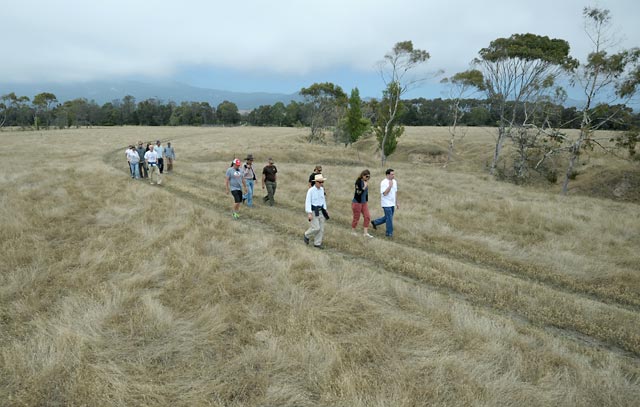
To be clear, Surfrider’s overarching governing body, headquartered in San Clemente, was in town simply to hold one of its three annual meetings, one of which is typically held on-location with a local chapter. This year, for the first time in many years, Surfrider — which boasts an international membership of more than 50,000 and has a track record of getting what it wants when it decides to throw its full weight behind a cause — decided to make the trip up the 101 and have its leadership powwow last Saturday along the Santa Barbara waterfront.
But before getting down to official business, Lejeune (who has been lobbying the executive board for the past two years to come up to Santa Barbara and see firsthand the Gaviota Coast — an area that the S.B. chapter has long made its number-one cause) had designs on getting the bigwigs out to Naples and, hopefully, planting the seed to consider making “Save Gaviota” or some similar sentiment a top priority of their own. “I just wanted to take them out there, show them what it is, and talk a bit about our work and the history of the land,” said Lejeune. “It’s not that we are looking for pots and pots of money. We just want their official support and the big push that that would provide.”
“The developers know there is nothing like this left and, to us, Naples is a very critical piece of that puzzle … We will oppose anybody and everybody who is looking to make a mess of it. Period,” opined Lejeune.
The word from both S.B. Surfrider and the Naples Coalition — the multifaceted grassroots group that was born specifically to combat Osgood’s plan and, more accurately, to preserve Naples as a natural space — is that no formal preservation plays are in the works, at least not now. Asked specifically about this, Lejeune responded by pointing out that the roughly 20 miles of coastline that make up the Gaviota Coast are basically the last 20 miles of largely unmolested coast anywhere in Southern California and, as such, should be of critical importance to anyone no matter where they call home. “The developers know there is nothing like this left and, to us, Naples is a very critical piece of that puzzle … We will oppose anybody and everybody who is looking to make a mess of it. Period,” opined Lejeune.
However, all that being said, Osgood’s observations about the current state of affairs are not to be easily dismissed, especially given the current state of both our state and national economies. First is the fact that he no longer is in control of the property save for his current house, on the mountain side of the highway, and two smaller parcels on the ocean mesa. After Osgood defaulted on his $63-million loan with First Bank last spring and failed to meet subsequent “first refusal” deadlines to buy it back in the months that followed, the Missouri-based financial institution assumed control of the controversial property.
Second, part-time Montecito resident Steve Posner, who many speculated might partner up with Osgood to re-buy Naples (there was a reported deal for just south of $50 million in place at one time) or perhaps spearhead an entirely separate group to buy it, died tragically this past winter in a high-speed boat crash in Miami.
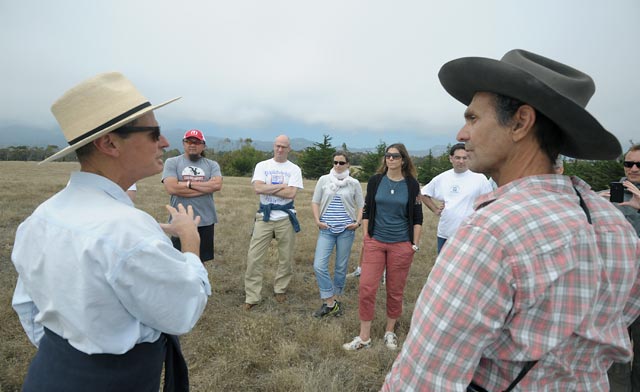
Third, the land deal that Osgood brokered with the neighboring Dos Pueblos Ranch that allowed for, among other things, the project’s large agricultural conservation easement (something that was considered one of the crucial “public benefits” of the project and thus helped mitigate certain unavoidable environmental impacts in such a way that the project became more appealing to county supervisors) has a sunset date that is fast approaching and, depending on whom you ask, probably will not be revisited should it expire.
Fourth is the fact that First Bank recently filed suit against Osgood over who exactly owns the development rights that the supes approved back in October 2008. This past February, the supervisors, looking to resolve the longstanding lawsuit-filled limbo that has plagued Naples ever since their approval, told First Bank and Osgood to figure out between themselves who the shot caller is on the development rights. While Osgood contends it is him, First Bank responded by simply filing a suit against him for said rights. (For the record, First Bank, in lockstep with its policy since first foreclosing on the property, has failed to return calls from The Independent.)
Lastly, and perhaps most important, is the judgment from the California Coastal Commission two weeks ago about a somewhat similar property in the cliffs of Malibu. With the Coastal Commission yet to have its regulatory bite at the Naples apple, the state agency’s outright denial on June 16 of the Sweetwater Mesa project (a small-scale luxury home development proposed by U2’s guitarist, The Edge) is of particular interest for anyone looking to get dozens of homes at the several-hundred-acre Naples property approved. In short, the Coastal Commission decided that the Sweetwater Mesa plan constituted a “unified development” despite the fact that the five proposed homes were all being pitched as having separate owners. As such, the commission decided that the project would need to match up with existing zoning and, well, that couldn’t logistically happen in such a way that the proposed homes could even be built. (The commission, it should be noted, also had issues with the houses themselves.)
This outcome is particularly relevant to the Naples debate because virtually every way to cut up the land and develop it with making money in mind in any large-scale sense would require rezones that would be nearly impossible to match up with the existing 100-acre zoning currently in place. Osgood, whose land-use attorney, Stanley Lamport, is a partner in the land-use firm that represented The Edge in the losing cause, said of the ruling this week, “It is certainly a game changer as far as Naples is concerned … It is only my opinion, but at this point, I’d say the logical buyers [for Naples] are no longer developers or speculators.”
Asked if he has been approached at all by either preservation or would-be development interests about his remaining parcels, two of which are on the beloved oceanfront mesa, Osgood said, “No, not really.” Then, in what may be the most ironic twist yet in the Naples saga, he added with a laugh, “Hey, if I’m not developing it, I’d just as soon keep it all open space.”



